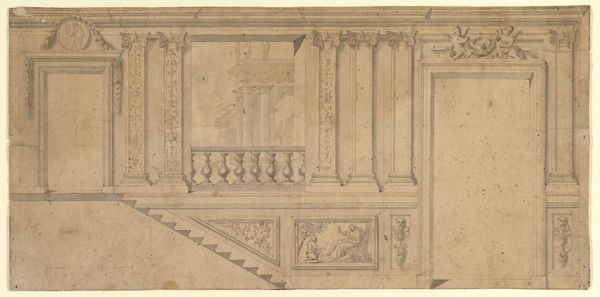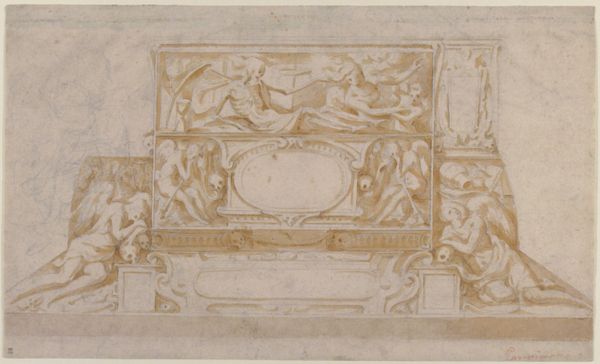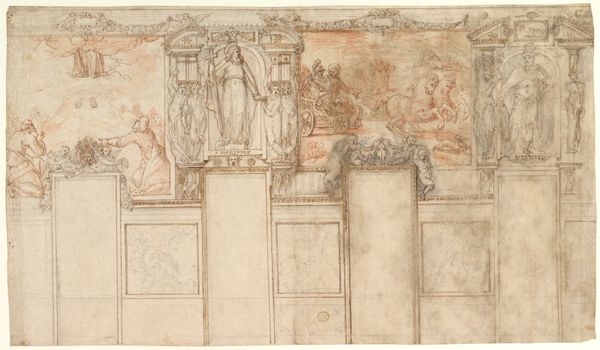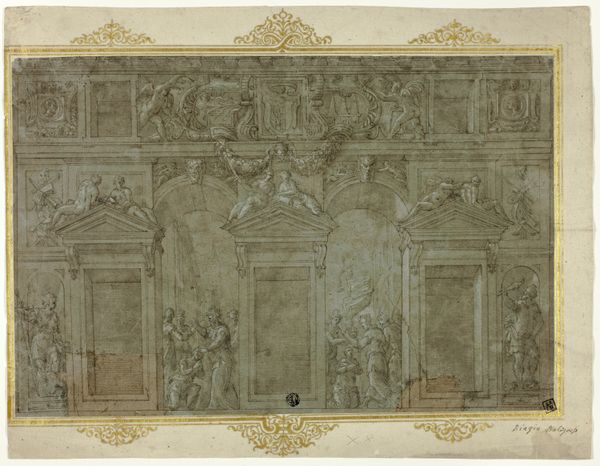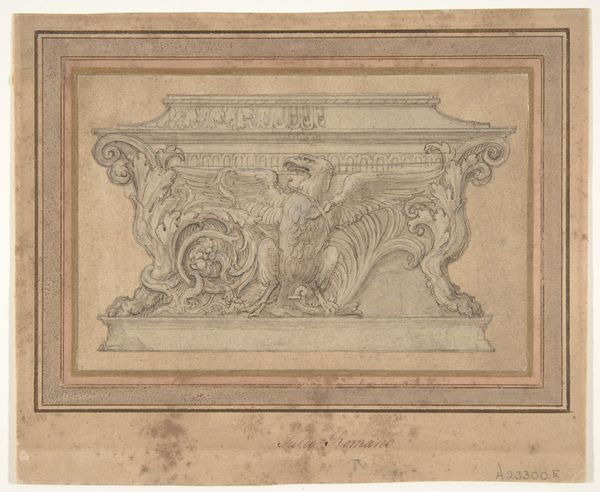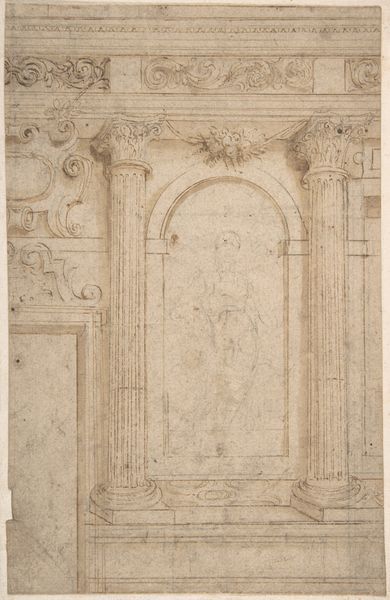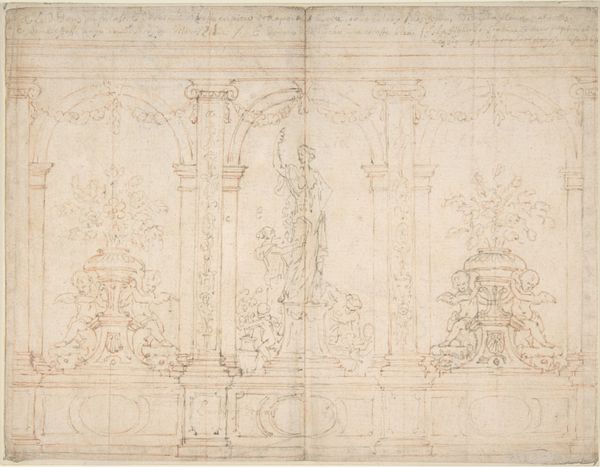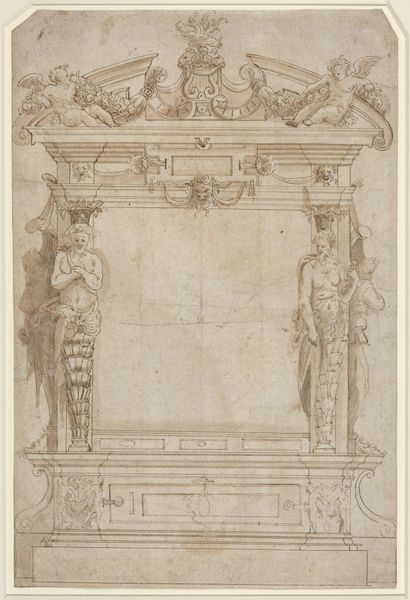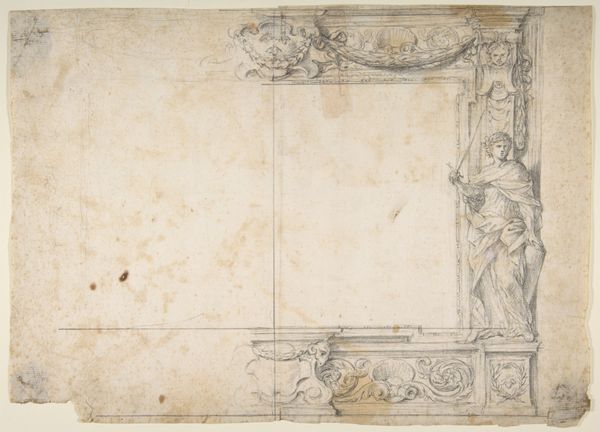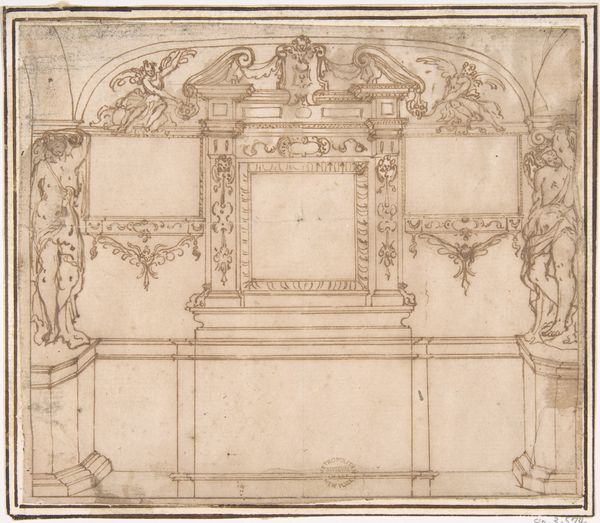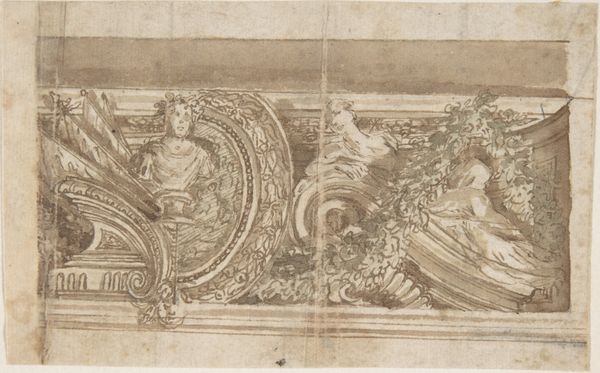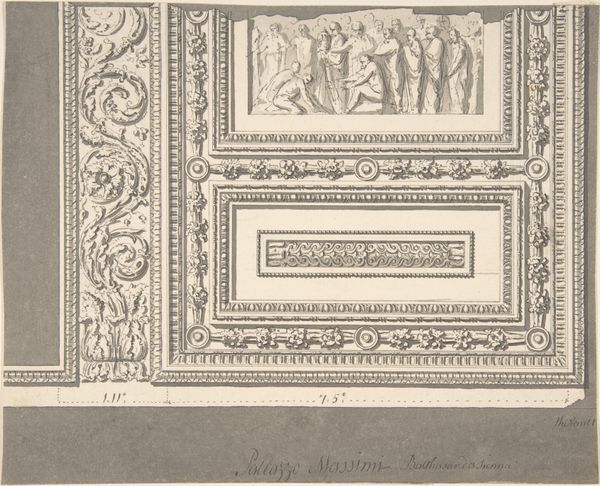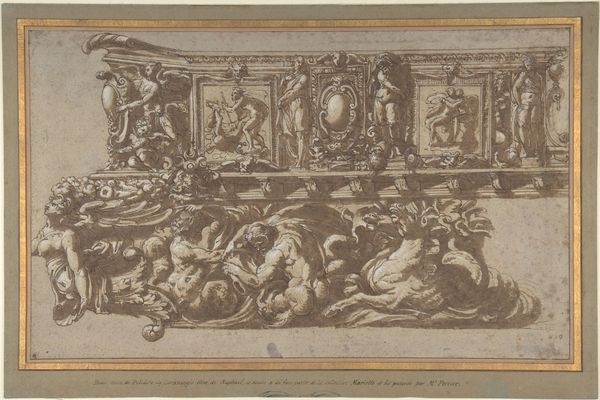
drawing, print, paper
#
drawing
# print
#
paper
#
form
#
11_renaissance
#
history-painting
#
decorative-art
#
italian-renaissance
Dimensions: 6 7/8 x 14 3/8 in. (17.4 x 36.5 cm)
Copyright: Public Domain
Editor: This is "Design for a Cassone," a drawing from the 16th century Renaissance period, held at the Met. Looking at the monochromatic color palette and the rigid symmetry, what do you make of the shapes and overall structure in this piece? Curator: Formally, this design showcases a dedication to balanced composition. Note how the unknown artist meticulously arranges ornamental motifs within the rectilinear structure of the cassone itself. The mirrored volutes and stylized acanthus leaves flank a central escutcheon. Editor: Yes, the decorative elements give a very balanced, but slightly stiff feeling. What’s the effect of the limited palette and line work in the drawing? Curator: Precisely, it’s a study in form. The monochromatic approach allows us to focus purely on the play of light and shadow as rendered through line and wash. Observe the confident, assured linework describing each detail of the cassone. Note the structural integrity the artist achieves, and how that contributes to the artwork’s overall statement. What do you see as the relationship between surface ornamentation and structural elements? Editor: I see how the surface embellishments enhance the basic structural design. Do you think it is missing some of the spirit or inventiveness we often attribute to Italian Renaissance works? Curator: That spirit is evident in the confident deployment of classical vocabulary – the frieze with repeating spirals, the supporting pilasters, the central cartouche. One can also explore the theoretical interplay between "ut pictura poesis" and applied art. Editor: Interesting point. Thank you! I’m now much more appreciative of the sophisticated form and balance. Curator: It’s through careful examination of form that we understand the underlying visual dialogue.
Comments
No comments
Be the first to comment and join the conversation on the ultimate creative platform.
